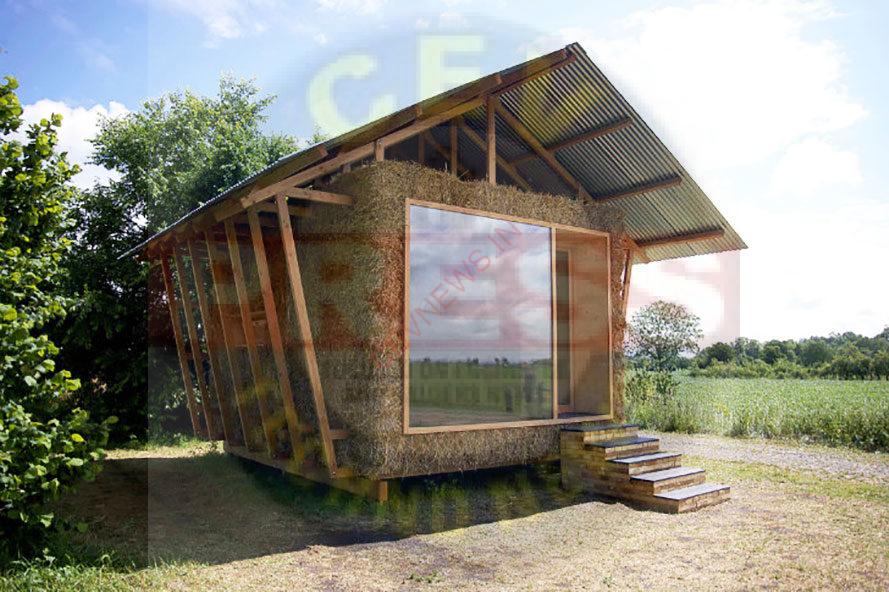1. Bamboo
Bamboo is considered one of the best eco-friendly building materials. It has an incredibly high self-generation rate, with some being reported to have grown up to three feet within 24 hours. It continues spreading and growing without having to be replanted after harvest. Bamboo is a perennial grass and not wood and grows on every continent, except Europe and Antarctica. It also has a high strength-to-weight ratio, even greater comprehensive strength than concrete and brick, and lasts incredibly long. It is, therefore, the best choice for flooring and cabinetry. Unfortunately, bamboo requires treatment to resist insects and rot. If left untreated, bamboo contains a starch that greatly invites insects, and it could swell and crack after absorbing water.
2. Precast Concrete Slabs
The slabs are formed at a manufacturer’s site and are shipped in whole sections to construction sites. Some are made entirely of concrete but have large hollow air spaces, like concrete blocks. Precast concrete slabs are used for walls and building facades as they hold up well to all sorts of weather, while others can be used for floor and flat roofs.
3. Cork
Just like bamboo, cork grows very quickly. It can also be harvested from a living tree, which continues to grow and reproduce more cork, which is a tree bark. Cork is resilient, flexible and reverts to its original shape even after enduring sustaining pressure. Its resilience and resistance to wear, makes it a common element in floor tiles.
4. Straw Bales
It is another green building material that can be used as a framing material. They have good insulation properties and can act as soundproof material. It can also be used as fill material in between columns and in beams framework/ as they cannot allow air through, they can have some fire resistance properties. Straw can be harvested and re-planted easily with minimal environmental impacts. Making straw into bales also has very low influence. They can also be placed in walls, attics and ceilings, to contribute to cooler the house in the summer and warmer temperatures in the winter.
5. Recycled Plastic
Rather than sourcing, mining and milling new components for construction, manufacturers are using recycled plastic and other ground-up trash to produce concrete. The practice is reducing greenhouse gas emissions and is giving plastic waste new use, rather than clogging landfills and contributing to plastic pollution.
6. Reclaimed Wood
Using reclaimed wood is one of the most environmentally responsible ways to save trees and reduce the amount of lumber in landfills. Reclaimed wood can be found in retired barns, excavation companies, home remodeling contractors and companies, salvage yards, and shipping crates and pallets.
7. Plant-based Polyurethane Rigid Foam
Rigid foam has for long been used as insulation material in building. It was first used after a top manufacturer of surfboard material, was fined by the EPA, and subsequently put out of business, for using a toxic material. The new surfboard material was made from plant-based polyurethane rigid foam, which came from bamboo, kelp and hemp, rejuvenating the surfboard industry.
8. Sheep’s Wool
Sheep’s wool is a great alternative to chemical-laden insulation. It insulates the home just as well as conventional insulation and requires less energy to manufacture. Sheep’s wool can increase energy efficiency and soundproof your structure. It does not degrade nearly as quickly as other insulation materials like straw and compared to some natural insulators such as cotton, sheep’s wool is more prevalent, can be harvested more easily and regenerates quickly.
9. Rammed Earth
It is a technology that has been used throughout human civilization for thousands of years and lasts a very long time. It is a popular and affordable solution to creating steadfast foundations, floors and walls, through natural materials such as chalk, earth, gravel or lime, and then compacting them.
10. Ferrock
It is a relatively new material and it uses recycled materials such as steel dust from the steel industry, or ferrous rock leftover from industrial processes, usually sent to the landfill. It creates a concrete-like building material, stronger than the concrete itself. It traps and absorbs carbon dioxide as part of its drying and hardening process.

